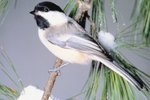Newly hatched painted lady butterflies need nourishment to survive, especially while their wings are unfurling shortly after they emerge from their cocoon. There are a number of ways to make this sugar-water solution available to them for proper nourishment in a sensitive time of their life cycle.
Mixing Sugar Water
Make sugar water for butterflies by adding 3 tsp. of sugar for each cup of water. Stir the solution until the sugar disappears. Use white cane sugar, as it dissolves most easily and offers the best nourishment to the young butterflies. Depending on how many butterflies you are feeding, follow the same recipe, just increase or decrease the amount of sugar-water solution keeping the same proportions.
Application of Solution
There are a number of ways to make the sugar-water solution available for the young painted lady butterflies. Add the solution to blooming flowers placed in the butterfly's tank. Use an eyedropper to squirt the sugar water directly into the flowers, so that when the young butterflies land on the flowers they will drink it. Or, dip a rolled up piece of cotton or tissue in the sugar-water solution and set it in the tank or cage for the young butterflies to feed on.
Feeding Schedule
Add the solution to flowers or on cotton or tissue balls every day, replenishing it often, so that it is always available to the young painted lady butterflies. In between feedings, keep the sugar water refrigerated to keep it fresh. Once you have fed the butterflies for a couple of days and their wings have completely unfurled, release them, as long as the temperature outside is above 55 degrees Fahrenheit. Keeping them in the tank longer can cause them to injure themselves by flying into the glass repeatedly.
References
Photo Credits
-
painted lady butterfly image by john barber from Fotolia.com
Writer Bio
Hailing from Austin, Texas, Daniel Westlake has written under pen names for a myriad of publications all over the nation, ranging from national magazines to local papers. He now lives in Los Angeles, Calif. but regularly travels around the country and abroad, exploring and experiencing everything he can.





